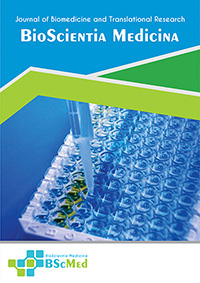Main Article Content
Abstract
Background: The association between human immunodeficiency virus (HIV) and reduced intraocular pressure (IOP) is recognized, yet its independence from confounding opportunistic infections like cytomegalovirus retinitis (CMVR) remains unquantified. This study aimed to determine the independent association between systemic HIV-1 viral load and IOP by employing a robust multivariable analysis in cohorts with and without CMVR.
Methods: A comparative, cross-sectional study was conducted on 100 HIV-positive patients (50 with CMVR, 50 without CMVR) at a tertiary referral hospital. Data included demographics, HIV clinical stage (WHO), quantitative HIV-1 viral load, and IOP measured by applanation tonometry. The primary analysis utilized a multivariable linear regression model to assess the association between log-transformed viral load and continuous IOP, adjusting for age, gender, HIV stage, and CMVR status. An interaction term was used to test for effect modification by CMVR.
Results: After adjusting for all covariates, log₁₀ HIV-1 viral load was a powerful and highly significant independent predictor of lower IOP. For every 10-fold increase in viral load, IOP decreased by an average of 0.88 mmHg (β = -0.88; 95% CI: -1.15 to -0.61; p < 0.001). Advanced HIV stage was also independently associated with lower IOP (Stage IV vs. Stage I: β = -1.25; 95% CI: -2.10 to -0.40; p = 0.004). The effect of viral load on IOP did not significantly differ between the CMVR and non-CMVR groups (p for interaction = 0.762), confirming its independent systemic effect.
Conclusion: Systemic HIV-1 viremia is a dominant, independent predictor of reduced intraocular pressure, irrespective of CMVR status. This dose-dependent relationship highlights a direct pathophysiological link between viral replication and aqueous humor dynamics. IOP measurement represents a potential adjunctive clinical indicator for monitoring systemic HIV-1 disease activity.
Keywords
Article Details
As our aim is to disseminate original research article, hence the publishing right is a necessary one. The publishing right is needed in order to reach the agreement between the author and publisher. As the journal is fully open access, the authors will sign an exclusive license agreement.
The authors have the right to:
- Share their article in the same ways permitted to third parties under the relevant user license.
- Retain copyright, patent, trademark and other intellectual property rights including research data.
- Proper attribution and credit for the published work.
For the open access article, the publisher is granted to the following right.
- The non-exclusive right to publish the article and grant right to others.
- For the published article, the publisher applied for the Creative Commons Attribution-NonCommercial-ShareAlike 4.0 International License.





